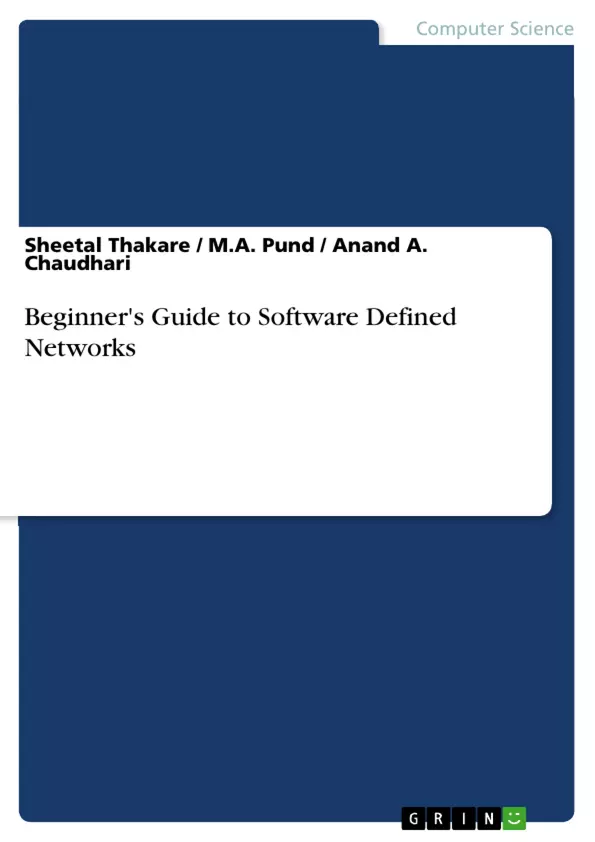SDN need can be explained with the help of real life analogy corresponding to water supply system. Water reservoir has pipes (data cables) attached to it to carry water (data) to the destination. Water regulation is done with the help of numerous valves (routers and switches).
Plumber (network admin) is the in charge of addition, up gradation of pipes and valves. As the pipe changes, corresponding valves need to be changed. This is costly and time consuming process, which causes lot of overhead in case of frequent infrastructural updates as the valves need individual-manual intervention. Bulk updation may cause installation errors or are more likely to faulty installations.
Considering the above scenario it is desirable to have remotely controlled updation (increased width, new connections, extensions etc) regarding the pipe (data cables) & valves (switches and routers). So if this analogy is applied to real networking scenario, the SDN concept comes in picture. SDN provides programmable switches & routers which can be controlled remotely and will not require any manual intervention.
Table of Contents
- NEED OF SDN.
- HISTORY/BACKGROUND.
- DEFINITION OF SDN.
- TERMINOLOGIES OF SDN
- SCENARIO BEFORE SDN
- SDN GROWTH.
- HOW SDN WORKS
- SDN OPERATION.
- SDN DEVICES..
- SDN CONTROLLERS.
- Introduction to OpenFlow..
- BUILDING BLOCKS OF Open Flow.
- OpenFlow Messages...
- Virtualization
- Platform uniformity improves operational efficiency.
- SDN Abstractions........
- Mininet and POX Installation
- Bibliography..
Objectives and Key Themes
This book provides a comprehensive guide to software-defined networking (SDN), covering its history, principles, and practical applications. It explores the evolution of networking from traditional architectures to modern SDN approaches, highlighting the benefits and challenges of this transformative technology.
- Understanding the need for SDN and its historical context
- Defining SDN and its key terminologies
- Exploring the architecture and operation of SDN, including control and data planes
- Delving into OpenFlow and its role in SDN
- Investigating the concepts of virtualization and its implications for SDN
Chapter Summaries
- NEED OF SDN. This chapter introduces the reader to the concept of SDN and its motivations. It discusses the limitations of traditional networking models and the advantages of adopting an SDN approach. Key points include increased flexibility, programmability, and efficiency offered by SDN.
- HISTORY/BACKGROUND. This chapter delves into the historical context of SDN, tracing its roots back to early networking concepts and technologies. It explores the evolution of networking architectures, highlighting the key milestones that led to the development of SDN.
- DEFINITION OF SDN. This chapter provides a formal definition of SDN, explaining its core principles and components. It clarifies the role of the control plane, data plane, and the separation of control from data, which are fundamental to SDN architecture.
- TERMINOLOGIES OF SDN. This chapter introduces key terminologies used in SDN, such as OpenFlow, SDN controllers, and SDN switches. It explains the relationship between these components and how they contribute to the overall SDN architecture.
- SCENARIO BEFORE SDN. This chapter provides a detailed overview of traditional networking architectures and their limitations. It describes the challenges associated with managing and configuring large and complex networks, setting the stage for the introduction of SDN as a solution.
- SDN GROWTH. This chapter explores the growth and adoption of SDN in various industries. It examines the factors driving this adoption, including technological advancements, industry trends, and the increasing demand for network agility.
- HOW SDN WORKS. This chapter delves into the functional aspects of SDN, explaining how it operates and how it enables network programmability. It highlights the key mechanisms, including flow-based forwarding, centralized control, and the role of OpenFlow.
- SDN OPERATION. This chapter focuses on the practical operation of SDN, including the interaction between SDN controllers and SDN switches. It describes how flow rules are used to configure and manage network traffic, ensuring efficient and flexible network operation.
- SDN DEVICES.. This chapter explores various SDN devices, including both software-based and hardware-based switches. It examines the role of these devices in implementing SDN architectures, highlighting their capabilities and limitations.
- SDN CONTROLLERS. This chapter discusses the key component of SDN, the SDN controller. It examines different types of SDN controllers, including centralized, distributed, and hybrid models, exploring their strengths and weaknesses.
- Introduction to OpenFlow.. This chapter introduces OpenFlow, a key protocol that enables communication between SDN controllers and switches. It describes the role of OpenFlow in SDN and its significance for network programmability.
- BUILDING BLOCKS OF Open Flow. This chapter explores the core components and building blocks of OpenFlow, including flow tables, messages, and the communication protocol between controllers and switches.
- OpenFlow Messages... This chapter dives into the specifics of OpenFlow messages, outlining their different types and functionalities. It demonstrates how OpenFlow messages are used to configure and control network traffic flow.
- Virtualization. This chapter explores the concept of virtualization in the context of SDN. It discusses different types of virtualization, their implications for SDN, and how they contribute to network flexibility and efficiency.
- Platform uniformity improves operational efficiency. This section delves into the benefits of platform uniformity in SDN environments, highlighting how it simplifies network management and improves operational efficiency.
- SDN Abstractions........ This section explores SDN abstractions, which provide a higher-level view of the network, simplifying network management and configuration.
- Mininet and POX Installation. This section provides practical instructions for setting up Mininet and POX, which are common tools used for experimenting with SDN.
Keywords
Key terms and concepts covered in this book include software-defined networking (SDN), OpenFlow, network virtualization, control plane, data plane, SDN controllers, SDN switches, flow rules, network programmability, network agility, and network automation.
- Quote paper
- Prof Sheetal Thakare (Author), Dr. M.A. Pund (Author), Prof. Anand A. Chaudhari (Author), 2020, Beginner's Guide to Software Defined Networks, Munich, GRIN Verlag, https://www.grin.com/document/935676



